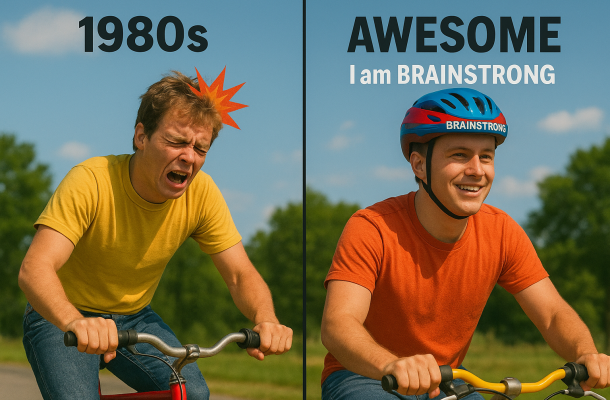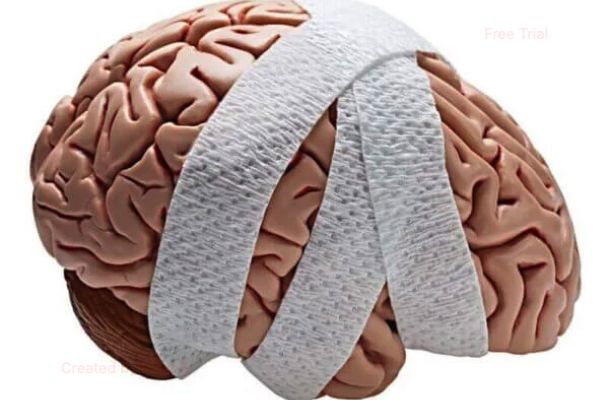The goal of “I am BrainSTRONG” is to make wearing helmets cool
The other day I was chatting with a neighbour about kids and biking, and what she told me blew my mind. She said that they aren’t allowed to ride without a helmet on, but why her kids won’t wear a bike helmet has nothing to do with anything logical—it’s simply peer pressure. They tell her that if they show up with a helmet strapped on, there’s a real risk they’ll be teased. They might get called a wimp, a baby, or something worse. And that means, for too many kids, the choice isn’t between safety and danger—it’s between safety and fitting in.
That’s a frightening thought. As someone who’s lived through the consequences of being run over by a minivan, I know what’s really at stake when a child gets on a bike without protection. Helmets save lives. They reduce the severity of injuries. In some cases, they’re the difference between standing up after a fall and never being the same again. But kids don’t think that way—not when peer pressure is weighing heavier than any helmet ever could.
This is where the underlying objective of “I am BrainSTRONG” becomes so important. Yes, the program is about raising awareness of the invisible but life-changing impact of brain injuries. Yes, it’s about giving kids a simple way to make a personal commitment to safety. But it’s also about something deeper. It’s about making helmet-wearing cool.
Think about it: kids want to belong. They want to be seen as strong, independent, and confident. Unfortunately, somewhere along the way, not wearing a helmet became tangled up with those values. The message kids send to one another when they mock someone for protecting themselves is: “If you want to be strong, you’ve got to take risks.” That’s not strength—that’s insecurity hiding behind bravado.
The goal of “I am BrainSTRONG” is to flip the script. Instead of being teased for protecting yourself, the idea is that you earn respect for it. Recording a short video pledge:
“My name is [Name], I live in [City], and I wear my helmet when biking because I am BrainSTRONG”
It isn’t simply a promise, but rather it’s a public declaration that you know who you are, you value your brain, and you’re proud to show it. Peer pressure works both ways, and the goal here is to make the positive choice the one kids want to follow.
Just imagine a group of friends about to head out for a bike ride. If one of them confidently straps on a helmet and says, “I am BrainSTRONG” suddenly it’s not a sign of weakness—it’s a badge of identity. It tells others: “I care enough about myself to protect my future.” That kind of confidence is contagious. And once kids see their peers wearing helmets with pride, the stigma starts to break down.
At the end of the day, helmets aren’t about fear—they’re about freedom. They give kids the chance to ride fast, take corners, and push themselves, all while knowing they’ve got protection. By shifting the culture so that helmets equal confidence, not cowardice, we can turn peer pressure into a powerful force for good.
Being safe isn’t lame. Being safe is smart. And being smart is cool. That’s what it means to be BrainSTRONG.
Comments (2)
Leave a Reply Cancel reply
This site uses Akismet to reduce spam. Learn how your comment data is processed.


This is so strong; BRAINstrong. Outstanding initiative.
Former NHL star Brad March is a cyclist. He played for both Ottawa and Toronto. I might suggest someone like Brad to endorse your project.
I didn’t know that, I’ll reach out today! Thank you!
Also, I’m going to be talking to Kerry on Tuesday, when he’s back, asking for his help contacting hockey players.